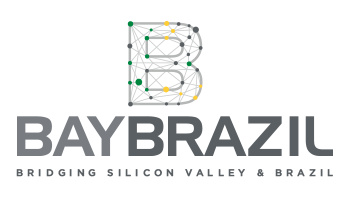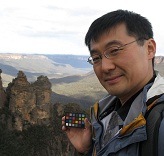Francisco Imai, Principal Scientist e Project Chief at Canon
BayBrazil: What are the trends in photography?
Francisco Imai: Imaging sensors trends show that digital cameras are going to be more and more ubiquitous. This can be useful to create image editing and enhancement technologies based on crowd-sourcing digital images available in the cyberspace but it also creates issues of privacy.
BayBrazil: Which countries are more rapidly adopting the new technologies on photography?
Francisco Imai: I believe there isn’t a country leading it because photography is a global phenomenon and the access to cameras incorporated to cell phones allows the technology to arrive remote regions in the world. Facebook has over 20 billion pictures with over 30 million added daily. There is a vast photo collection available in the cyberspace, a research from Washington University resulted in a Microsoft product called Photosynth, which creates tridimensional scenes combining photos taken approximately in the same place.
BayBrazil: What is the secret to make consumers enthusiastic about a digital camera?
Francisco Imai: Introduce novel and cool technologies.
BayBrazil: How the advances in printing have affected the digital camera market?
Francisco Imai: Digital camera market increases regardless of the advances in printing. Although more than 77% of households in the USA adopt digital cameras, prints made by US consumers are decreasing year-by-year according to PMA. Most camera users do not print their pictures anymore.
BayBrazil: As for image technology applied to webcams, will we be able to have eye-to-eye conversations?
Francisco Imai: In order to provide remote eye-to-eye conversation, also known as telepresence, there is need for cameras and image displaying systems that allow a large field-of-view but it also needs high fidelity sound and high-bandwidth for data transmission.
BayBrazil: How is your life as a scientist?
Francisco Imai: Extremely busy not only due to my current research but also because my attributions as a project chief and my involvement in chairing international conferences such as the Digital Photography Conference (that is going to take as part of the Electronic Imaging Symposium in San Francisco next January) and the Color Imaging Conference (that is going to happen in San Antonio, TX next November). But it is very satisfying to know that I can make some contribution to the digital photography industry with my work and also for the imaging community with my outreach activities.
BayBrazil: How is to be a Brazilian scientist in the Silicon Valley?
Francisco Imai: Silicon Valley is a multi-cultural melting pot with professionals from a varied mix of countries, ethnical and cultural backgrounds. However it is not widely known that there is a very successful community of Brazilian professionals that are thriving here. One way to connect to fellow Brazilian is through network of friends and alumni. For instance, I belong to a network of alumni from ITA (Technological Institute of Aeronautics) called AEITA. I also joined BayHiking, a group that promotes hikes on Saturday mornings.








